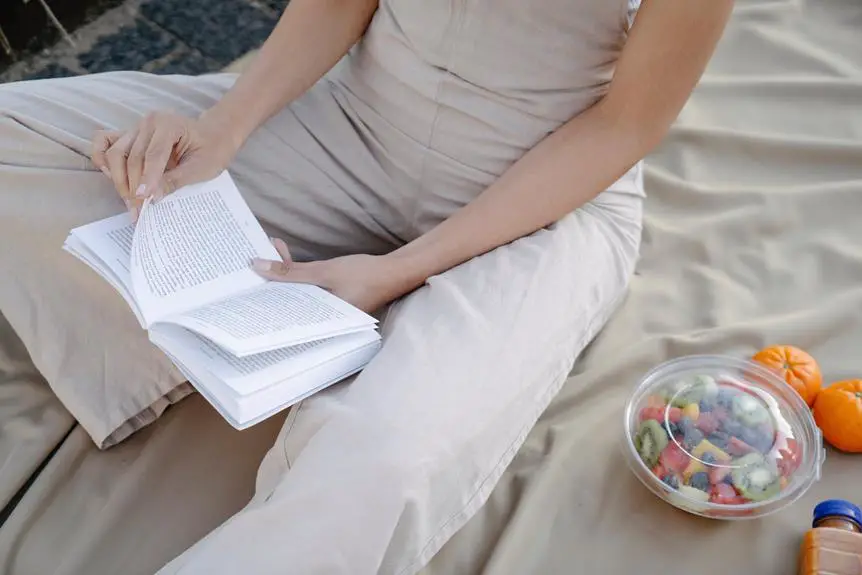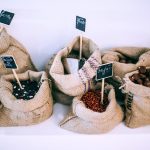Hey there!
Have you ever experienced the frustration of your lunch turning lukewarm before you even get a chance to eat it? Choosing the right fabric for your insulated lunch bag can make all the difference.
When it comes to keeping your meals fresh and at the perfect temperature, not all fabrics are created equal.
In this guide, we'll explore the best fabrics for insulated lunch bags, from the breathability of cotton to the durability of nylon and the moisture-wicking properties of polyester.
By the end, you'll have a solid grasp on which fabric will best suit your needs, allowing you to enjoy your lunch just the way you like it.
Key Takeaways
- Cotton offers durability and insulation, making it a great choice for insulated lunch bags. It is also a sustainable and renewable material that is easy to clean and maintain.
- Nylon is highly durable and has excellent insulating properties. It is easy to clean and convenient for busy individuals, with additional insulation layers and leak-proof linings for added convenience.
- Polyester provides excellent insulation and durability, and it is easy to clean and practical for everyday use. It also offers eco-friendly options from recycled materials and retains its shape and color over time.
- Different insulation options are available for insulated lunch bags, such as recycled polyester, foam insulation, aluminum lining, and cotton insulation. Each option has its own benefits in terms of reducing waste, thermal effectiveness, and eco-friendliness.
Factors to Consider
When choosing fabrics for insulated lunch bags, you should consider factors such as durability, insulation capabilities, and ease of cleaning. Opting for cost-effective options doesn't mean sacrificing quality. Look for materials like nylon and polyester, which aren't only affordable but also highly durable. These fabrics can withstand daily wear and tear, making them a practical choice for long-term use.
In addition to durability, insulation capabilities are crucial for keeping your food at the right temperature. Fabrics like neoprene and PEVA lining provide excellent insulation to maintain the desired temperature of your meals. This ensures that your food stays fresh and safe to eat throughout the day.
For those concerned about the environmental impact, eco-friendly materials like organic cotton and recycled polyester are excellent choices. These materials not only offer durability and insulation but also align with sustainable and environmentally conscious practices.
Lastly, ease of cleaning is essential for maintaining hygiene. Look for fabrics that are easy to wipe clean or machine washable, ensuring that your lunch bag stays fresh and ready for daily use.
Cotton
To ensure the durability and insulation capabilities of your insulated lunch bag, consider using cotton as it offers a natural and eco-friendly option for maintaining the freshness of your meals.
Cotton insulation is known for its excellent thermal properties, making it a fantastic choice for keeping your food at the right temperature. The tightly woven fibers of cotton help to trap heat, keeping warm foods from getting cold and cold foods from getting warm. This means that your lunch will stay fresh and delicious until you're ready to enjoy it.
Cotton also has the added benefit of being a sustainable and renewable material, making it an environmentally conscious choice for your insulated lunch bag. It's also easy to clean and maintain, so you can keep your lunch bag in top condition for a long time. Additionally, cotton is a breathable fabric, which can prevent moisture buildup inside the bag, ensuring that your food stays dry and fresh.
When it comes to insulated lunch bags, cotton is a reliable and effective choice that provides both thermal insulation and eco-friendly benefits.
Nylon
Nylon is a great choice for insulated lunch bags for a few reasons.
First, it's known for its excellent insulating properties, helping to keep your food at the right temperature.
Second, nylon is highly durable, ensuring that your lunch bag will last through daily wear and tear.
Lastly, it's easy to clean, making it a convenient option for busy individuals on the go.
Nylon's Insulating Properties
You can rely on nylon for its excellent insulating properties when choosing fabric for your insulated lunch bag.
Nylon is a great choice for maintaining temperature control within your lunch bag. Its ability to keep hot foods hot and cold foods cold makes it a practical option for preserving the freshness of your meals.
When selecting a nylon lunch bag, look for options that have additional insulation layers to enhance its thermal properties. Some nylon lunch bags also come with features like leak-proof linings and adjustable straps for added convenience.
Consider the thickness and quality of the nylon fabric to ensure optimal insulation. With its reliable insulating capabilities, nylon is a smart choice for keeping your meals at the right temperature throughout the day.
Durability and Easy Cleaning
When considering durability and easy cleaning for your nylon lunch bag, opt for a design that incorporates sturdy materials and simple maintenance. Nylon lunch bags are renowned for their longevity and stain resistance, making them an ideal choice for daily use. The durable nature of nylon ensures that your lunch bag will withstand the rigors of regular use, while its stain resistance makes cleaning a breeze. Simply wipe away any spills or stains with a damp cloth, and your lunch bag will look as good as new. Here's a comparison of nylon with other common lunch bag fabrics:
| Fabric | Durability | Easy Cleaning |
|---|---|---|
| Nylon | High | Easy |
| Polyester | Medium | Moderate |
| Canvas | High | Moderate |
Choosing a nylon lunch bag ensures both longevity and easy maintenance, making it a practical and reliable option for your daily lunch-carrying needs.
Polyester
For the best insulated lunch bags, polyester is an excellent choice due to its insulating properties and durability. Polyester insulation provides reliable temperature control, keeping your food fresh for longer periods. This material is also easy to clean, making it a practical option for everyday use.
Additionally, polyester is known for its eco-friendly options, as it can be produced from recycled materials, contributing to sustainability efforts. Its lightweight nature adds to its appeal, as it doesn't add unnecessary bulk to your lunch bag while still providing effective insulation.
When considering an insulated lunch bag, opting for polyester means you're choosing a material that can withstand the demands of daily use. Its ability to retain its shape and color over time makes it a long-lasting choice, saving you from having to replace your lunch bag frequently.
With its insulating capabilities and eco-friendly options, polyester stands out as a top choice for those seeking a reliable and sustainable insulated lunch bag solution.
Insulation Options
Consider using a double-layered insulation to ensure maximum temperature retention for your insulated lunch bag. This type of insulation provides a barrier that helps keep your food hot or cold for longer periods.
When choosing insulation options for your lunch bag, it's essential to consider both thermal effectiveness and eco-friendly options. Here are some insulation choices to keep in mind:
- Recycled Polyester: Utilizing insulation made from recycled polyester helps reduce waste and minimizes environmental impact.
- Foam Insulation: Foam provides excellent thermal effectiveness and helps maintain the desired temperature inside the lunch bag.
- Aluminum Lining: An aluminum lining reflects heat and can effectively keep the contents of your lunch bag cool or warm.
- Cotton Insulation: Cotton insulation is a natural and eco-friendly option that offers good thermal retention for your lunch bag.
- Biodegradable Insulation: Opting for biodegradable insulation materials ensures that your lunch bag has minimal impact on the environment, making it a sustainable choice.
Cleaning and Maintenance
To maintain the insulation effectiveness of your lunch bag, regularly clean and inspect the interior and exterior for any signs of wear or damage. Additionally, wipe down the interior with a damp cloth after each use to prevent the buildup of food residue.
When it comes to cleaning your insulated lunch bag, it's essential to follow a few simple steps. For general maintenance, spot clean any spills or stains as soon as possible to prevent them from setting in. Use a mild soap or detergent with warm water and a soft cloth to gently scrub the affected area. For tougher stains, consider using a cleaning solution specifically designed for the bag's material. Always check the manufacturer's instructions for any specific cleaning tips or stain removal techniques.
After cleaning, ensure the bag is completely dry before using it again to prevent mold or mildew from developing. By following these cleaning and maintenance practices, you can prolong the life of your insulated lunch bag and keep it looking and performing at its best.
Frequently Asked Questions
Are There Any Special Considerations for Using Insulated Lunch Bags Made From Natural Fabrics Like Cotton, Such as Potential Shrinkage or Color Fading?
When using insulated lunch bags made from natural fabrics like cotton, there are potential shrinkage and color fading concerns. To prevent this, follow care instructions, and consider hand washing or using a gentle machine cycle.
Can Nylon Insulated Lunch Bags Be Safely Machine Washed, or Are There Specific Care Instructions to Follow?
You can safely machine wash nylon insulated lunch bags, but be sure to check the care instructions for specifics. Nylon is a durable and safe material for washing, and it also has a lower environmental impact compared to some other fabrics.
What Are the Environmental Impacts of Using Polyester Insulated Lunch Bags, and Are There Any Sustainable Alternatives?
Using polyester for insulated lunch bags has environmental impacts due to its synthetic nature. Consider sustainable alternatives like organic cotton, recycled PET, or insulated bags made from natural fibers to reduce your environmental footprint.
Are There Any Potential Health Concerns Associated With the Insulation Materials Used in Insulated Lunch Bags, Such as BPA or Phthalates?
Potential health concerns associated with insulation materials in lunch bags include BPA and phthalates. When choosing a bag, prioritize natural fabric options. For nylon bags, follow care instructions to minimize potential health risks.
Is There a Recommended Frequency for Cleaning Insulated Lunch Bags to Ensure They Remain Hygienic and Odor-Free?
To keep your insulated lunch bag clean and odor-free, it's recommended to clean it at least once a week. Regular cleaning helps prevent odors and maintains hygiene. Wipe it down with a mild soap solution and let it air dry.
- Tetron Fabric for Marine Applications: Durability and Use Cases - June 18, 2025
- Tetron Fabric for Outdoor Furniture: Weather Resistance and Care - June 18, 2025
- Tetron Fabric for Wall Coverings: Style and Application Tips - June 18, 2025





